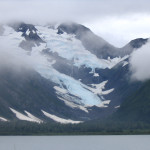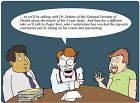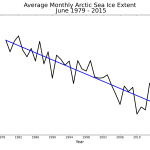 Recently there has been a sudden surge in support for passing bills in both the House and Senate to modernize the four-decade-old Toxic Substances Control Act, i.e., TSCA. This post will explain why this is happening, why TSCA Reform can pass now, and why it should pass – even though it likely will do nothing substantial to make us safer.
Recently there has been a sudden surge in support for passing bills in both the House and Senate to modernize the four-decade-old Toxic Substances Control Act, i.e., TSCA. This post will explain why this is happening, why TSCA Reform can pass now, and why it should pass – even though it likely will do nothing substantial to make us safer.
What is TSCA anyway?
For those who missed it, TSCA was passed in 1976. That’s right, when Gerald Ford, the only President never to have been elected to either the presidency or vice-presidency (Hint: Nixon and Agnew were, in fact, crooks), signed it into law. TSCA was designed to regulate commercial chemicals before they could be put on the market. Well, except for the 65,000 or so chemicals that were already on the market – those chemicals got grandfathered onto an Inventory, a list of chemicals it was okay to use despite none of them ever having been tested for safety. New chemicals had to go through a review by the Environmental Protection Agency, though the EPA could not actually require any safety testing unless they could prove that the chemicals were dangerous…which they found hard to do since they couldn’t require anyone to do any safety testing. You can see why there was a need to reform TSCA.
Which no one did for nearly 40 years.
Why COULDN’T TSCA be reformed before?
Senator Frank Lautenberg (D-NJ) tried. In 2005 he introduced the first of several TSCA reform bills that were immediately relegated to the wastebasket with zero action. Not one ever got out of committee. For ten years the Republican Party, along with a few Democrats from states heavy on chemical industry influences, managed to block a half-dozen or more attempts by Lautenberg in the Senate (and Henry Waxman [D-CA)] in the House) from ever getting a vote.
Lautenberg’s initial bill would have fundamentally changed our chemical control system by requiring companies to provide substantial health and safety data on chemicals before they went onto the market. It would have also required companies to provide data for all of the 65,000 chemicals that had been grandfathered onto the Inventory (plus, all the 25,000 or so additional chemicals that were added to the Inventory after only rudimentary model-based evaluation by EPA).
While needed, the requirements were functionally unworkable under our current review structure. When Europe passed a law called REACH that required essentially the same data, they also created an entirely new chemicals agency staffed with at least 500 people and a system for collecting and evaluating the millions of data points that would be coming their way over a ten year period.
A new agency! The EPA would not have been able to handle the workload, especially given the Congressional defunding and forced retirement of key staffers that has been plaguing them for the last decade or more. There is no way Congress would even boost their staff to handle the new data, never mind create an entirely new agency. That one fact killed any chance of a workable solution.
Lautenberg continued to try to revise his bills over the next 10 years, making them more and more industry-friendly with each iteration. His latest version, offered up soon before he passed away, was supported by then-committee chairwoman Barbara Boxer (D-CA), who frequently sparred with then-ranking member and serial climate denier James Inhofe (R-OK). Her conflicts with Inhofe were seamlessly passed to his replacement, Senator David Vitter (R-LA), when he began working with Lautenberg on a new, even more industry-friendly, bill. After Lautenberg’s death, Senator Tom Udall (D-NM) joined with Vitter to come up with the precursor to the current Senate bill. While the bipartisanship was nice, the dropping of all the fundamental reforms originally proposed by Lautenberg make Boxer a bitter enemy of the bill.
Why CAN TSCA reform pass now?
The answer is easy, though it’s also a reflection of the rather cynical power of lobbyists when it comes to making laws.
[Continue reading on The Dake Page]
The above is a partial cross-post of a full article on The Dake Page. Please click on the link above to read further. Thanks.
David J. Kent has been a scientist for over thirty years, is an avid science traveler, and an independent Abraham Lincoln historian. He is the author of Tesla: The Wizard of Electricity and the e-book Nikola Tesla: Renewable Energy Ahead of Its Time. He is currently writing a book on Thomas Edison.
Follow me by subscribing by email on the home page. And feel free to “Like” my Facebook author’s page and connect on LinkedIn. Share with your friends using the buttons below.
Like this:
Like Loading...
 It’s been a big week in climate change, in more ways than one. This is especially true for President Obama. First he went to New Orleans, and then he spent several days in Alaska. That’s a big deal for climate communication.
It’s been a big week in climate change, in more ways than one. This is especially true for President Obama. First he went to New Orleans, and then he spent several days in Alaska. That’s a big deal for climate communication.


 It’s time for a science debate in which all the candidates for president – Republican and Democratic – engage in an honest discussion of science-based issues. Such is the premise behind
It’s time for a science debate in which all the candidates for president – Republican and Democratic – engage in an honest discussion of science-based issues. Such is the premise behind  This is the story of Henrietta Lacks, her HeLa cells, and her family’s struggle to learn about their long dead mother. It’s also a detective story, a story of medical conduct, a story of Jim Crow, a story of modern and historical psychology, a story of ethics, and a story of religious faith. It is even a love story. It is all of these things, and Rebecca Skloot has successfully merged them into one of the most fascinating books I’ve read in many years. [
This is the story of Henrietta Lacks, her HeLa cells, and her family’s struggle to learn about their long dead mother. It’s also a detective story, a story of medical conduct, a story of Jim Crow, a story of modern and historical psychology, a story of ethics, and a story of religious faith. It is even a love story. It is all of these things, and Rebecca Skloot has successfully merged them into one of the most fascinating books I’ve read in many years. [ A new peer-reviewed paper was published recently in the scientific journal Theoretical and Applied Climatology. Its title is “Learning from Mistakes in Climate Research” and the objective is to survey recent “denier” papers, that is, the rare papers that reject the unequivocal scientific consensus that human activity is warming our climate system. The authors – seven climate scientists and science communicators from Norway, the Netherlands, the United States, the UK, and Australia – highlighted the errors in fact and logic common to the selected denier papers.
A new peer-reviewed paper was published recently in the scientific journal Theoretical and Applied Climatology. Its title is “Learning from Mistakes in Climate Research” and the objective is to survey recent “denier” papers, that is, the rare papers that reject the unequivocal scientific consensus that human activity is warming our climate system. The authors – seven climate scientists and science communicators from Norway, the Netherlands, the United States, the UK, and Australia – highlighted the errors in fact and logic common to the selected denier papers. Recently there has been a sudden surge in support for passing bills in both the House and Senate to modernize the four-decade-old Toxic Substances Control Act, i.e., TSCA. This post will explain why this is happening, why TSCA Reform can pass now, and why it should pass – even though it likely will do nothing substantial to make us safer.
Recently there has been a sudden surge in support for passing bills in both the House and Senate to modernize the four-decade-old Toxic Substances Control Act, i.e., TSCA. This post will explain why this is happening, why TSCA Reform can pass now, and why it should pass – even though it likely will do nothing substantial to make us safer. We’ve talked about several of the tactics used by climate deniers to intentionally mislead the public. This past week provided a prime example of one tactic – intentionally lying about what a study says. Let’s take a closer look at how this works.
We’ve talked about several of the tactics used by climate deniers to intentionally mislead the public. This past week provided a prime example of one tactic – intentionally lying about what a study says. Let’s take a closer look at how this works. Earlier this year I posted a series of articles explaining what scientific peer-review is, and what it isn’t. The series was very popular so I’ve decided to create this single post that links to all the previous ones.
Earlier this year I posted a series of articles explaining what scientific peer-review is, and what it isn’t. The series was very popular so I’ve decided to create this single post that links to all the previous ones. This week the Citizens’ Climate Lobby (CCL) held its 6th annual International Conference in Washington, DC. The keynote speaker was Dr. Katharine Hayhoe, an atmospheric scientist at Texas Tech University in Lubbock, Texas. In addition to being a climate scientist, Hayhoe is an evangelical Christian, which generally would be irrelevant to the discussion except that she, with her husband, pastor Andrew Farley, wrote
This week the Citizens’ Climate Lobby (CCL) held its 6th annual International Conference in Washington, DC. The keynote speaker was Dr. Katharine Hayhoe, an atmospheric scientist at Texas Tech University in Lubbock, Texas. In addition to being a climate scientist, Hayhoe is an evangelical Christian, which generally would be irrelevant to the discussion except that she, with her husband, pastor Andrew Farley, wrote  It should go without saying that when you deny reality long enough, eventually reality makes you look foolish. Climate deniers have been denying the science behind man-made climate change for so long that they have lost even the illusion of credibility. They have become their own worst enemy, and as such have put themselves on a path of complete irrelevancy.
It should go without saying that when you deny reality long enough, eventually reality makes you look foolish. Climate deniers have been denying the science behind man-made climate change for so long that they have lost even the illusion of credibility. They have become their own worst enemy, and as such have put themselves on a path of complete irrelevancy. Book Review: The People’s Republic of
Book Review: The People’s Republic of  The Puppet Suit
The Puppet Suit






